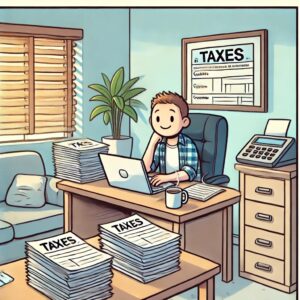By: Lydia Dishman for Fast Company, picture by PeopleImages/Getty Images
As a nation, we’re obsessed with getting stuff done. There is an endless supply of advice from time management experts, productivity evangelists, and thought leaders who have managed to hack their way into the 24-hour day and wring out the maximum output into each waking moment. Productivity software alone accounts for an $82 billion market, according to IBISWorld research.
At Fast Company, our deep research regularly divulges the secrets of the most productive people both on a dedicated podcast and through our reporting. But as the new year dawns, we’ve put together a special collection of fresh new tips along with a selection of the most helpful advice we’ve gathered to help make 2019 your most productive year yet.
KEEP IT SIMPLE
Dr. Tomas Chamorro-Premuzic, an international authority in leadership assessment, people analytics, and talent management, breaks down what appears to be a complex equation to its essence. “Productivity is doing more with less: output divided by input,” he advises. “If you want to be more productive without working more, then your only option is to work less.” That means you need to eliminate wasted time by ditching trivial activities and focusing on what really matters. “Even if your output doesn’t go up,” he says, “you will at least have more free time to produce (or waste) in other areas of life.”
If you want to know how to achieve big goals (like saving money, getting a promotion, or running a marathon), Fast Company’s assistant editor Anisa Purbasari Horton has the formula. She hit the mark on all of these resolutions in one year by switching up the way she approached them. “They were things that I had control over–they were habit goals, which focused on the process, rather than achievement goals, which rests on the outcome,” she explains. “I knew exactly what I needed to do each week, and I simply made that a priority.”
DON’T PILE ON TASKS
It may seem counterintuitive, but packing the calendar doesn’t ensure that you’ll get more accomplished in a day.
Time management coach Elizabeth Grace Saunders says you should start each week with being clear on your top two to three goals. You should then schedule in times for those first, and make everything else fit around those times.
Ximena Vengoechea, a design researcher, writer, and illustrator, starts this by looking at her schedule first thing Monday morning. She chooses no more than three goals or focus areas for the week. “Then, at the top of each morning, I prioritize activities that will help me make progress in those areas.” She does this by asking if these tasks are tied to her top three priorities for the week. “If not, they go “below the line,” meaning I’ll only take them on once I’ve hit my focus areas,” she says.
If you’re having trouble prioritizing, it may make sense to cut the workweek by a day. It’s a bold move, but one that’s been shown to boost productivity during the time you are actually working. In a previous report, Metis Communication director of marketing Rachel Sullivan told Fast Company that since shifting to a four-day workweek, she’s able to prioritize better and has also eliminated any distractions that could potentially prevent her from being able to enjoy her (well-earned) day off.
SCHEDULE THINKING TIME
Author, founder, and strategic advisor Reva Seth has been researching and writing about productivity and time management for the past decade. 2018 was the year that she tested all the tools, hacks, and ideas she’d ever come across. Seth moved with three boys under age 12 to a new country, supported her partner in his new public role as Canada’s Consul General to San Francisco, and continued to build her cannabis media company.
“Be honest about what you need time-wise to stay balanced, energized, and creative and then make it a priority,” she observes. “For me, this meant staying committed to my creative headspace time.” Long walks gave her time to think about the issues and ideas, and space to daydream.
Vengoechea schedules an hour of thinking time into her day. “Where I can think proactively about what I’m working on as opposed to reactively, where I’m likely to wind up working on someone else’s priorities,” she says.
To get that free hour, Saunders suggests shortening meeting times when possible, come in with an agenda for each one, and end meetings once the discussion is done. Time management expert Laura Vanderkam recently revealed 13 hidden pockets of free time you could find in any day if you need extra assistance finding time to think.




